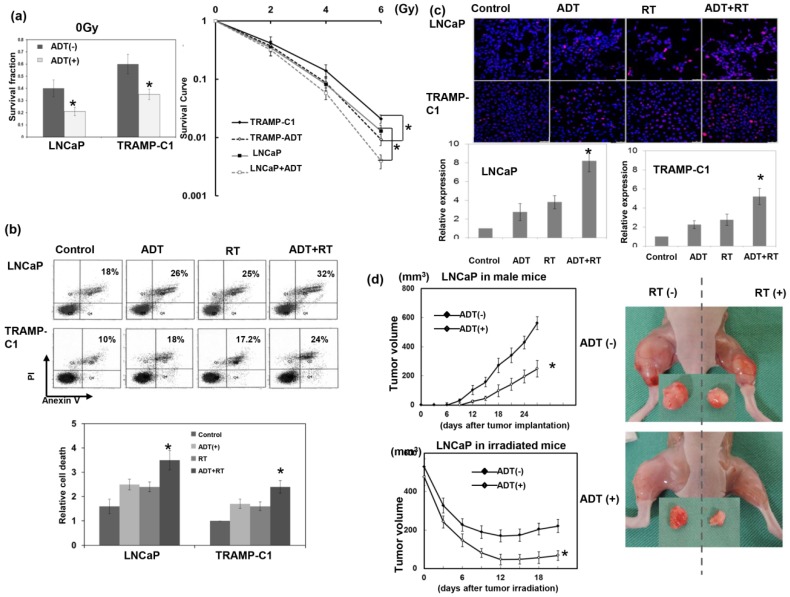Figure 1.
Effect of androgen deprivation therapy (ADT) on radiation sensitivities of prostate cancer. (a) Survival fractions were constructed using colony-forming assays for cells with or without ADT (10 μM enzalutamide). In addition, a clonogenic assay was performed with prostate cancer cells with or without 10 μM enzalutamide for 3 days before irradiation. The cells were irradiated with 0, 2, 4, or 6 Gy, and the survival curve was determined by colony counting and normalized with plating efficiency. Each point is an average of three experiments. (b) The in vitro effects of treatments on apoptosis as evaluated by fluorescence-activated cell sorting (FACS) with Annexin V-PI staining 48 h after irradiation. The y axis represents the ratio normalized by the value of TRAMP-C1 under control conditions. (c) DNA damage as evaluated by immunofluorescence staining with p-H2AX 24 h after irradiation. Scale bars: 50 μm. The quantification was the calculation of the value of the cell numbers positive for p-H2AX divided by the total cell number. The y axis represents the ratio normalized by the value under control conditions. (d) The effects of ADT on tumor growth curves and the radiation response were examined using LNCaP ectopic tumors in mice with or without medical ADT. We also showed the representative images 12 days after 15 Gy irradiation or sham irradiation (ADT, 25 mg/kg enzalutamide daily since one week before irradiation). The data represent the means of experiments (three animals in one experiment, performed three times independently), * p < 0.05.

